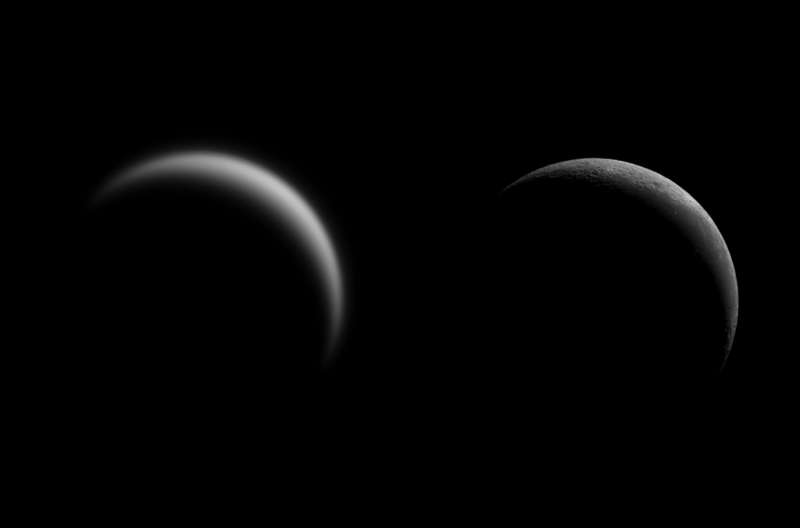
|
Credit & Copyright: Juan Luis C÷novas P÷rez
Explanation:
Even
though Venus
(left) was the brightest planet in the sky it was less than
1/30th the apparent size of the Moon on January 29.
But as both rose before the Sun they shared a crescent phase.
For a moment their visible disks were each about 12 percent illuminated
as they stood above the southeastern horizon.
The similar sunlit crescents were captured in
these
two separate images.
Made at different magnifications, each panel is a composite of
stacked video frames taken with a small telescope.
Venus goes through a range of
phases like
the Moon as the inner planet
wanders from evening sky to morning sky
and back again with a period of 584 days.
Of course the Moon
completes its own cycle of phases, a full lunation, in about
29.5 days.
|
January February March April May June July August September October November December |
| ||||||||||||||||||||||||||||||||||||||||||||||||
NASA Web Site Statements, Warnings, and Disclaimers
NASA Official: Jay Norris. Specific rights apply.
A service of: LHEA at NASA / GSFC
& Michigan Tech. U.
Based on Astronomy Picture
Of the Day
Publications with keywords: Moon - Venus
Publications with words: Moon - Venus
See also:
